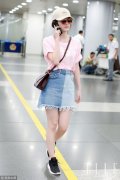Update Time:2018-08-04Click:202

Avant-garde, a term originating from the French language, translates to "advance guard" or "vanguard". In the fashion context, the Avant-garde movement represents a foray into uncharted, imaginative, experimental designs that propel the boundaries of the norm. This sect of fashion has been instrumental in reshaping both high fashion and street style, acting as a visionary force that continually inspires, disrupts, and influences trends.
High fashion, also known as haute couture, is best known for its luxurious extravagance, exquisite craftsmanship, and continual quest for novelty. No wonder then that avant-garde, with its compositional innovation and ideological bravery, has had significant reverberations on haute couture. Avant-garde designers like Rei Kawakubo of Comme des Gar?ons, Yohji Yamamoto, and Martin Margiela have been known for daringly deconstructing and reconstructing traditional silhouettes, introducing unconventional materials, and challenging the established notions of beauty and wearability, thereby revolutionizing high-fashion design philosophy.
Designers like Kawakubo, with their avant-garde sensibilities, have jolted haute couture off its conventional axis, questioning the very form and function of fashion. The iconic lumps-and-bumps collections, billowing garments with irregular padded humps, defied conventional beauty standards and brought a new perspective to how we view the female body and clothing. Similarly, the Margiela's deconstructed and reconstructed pieces provided a raw, unfinished aesthetic that defied the polished norms of high fashion.
According to avant-garde principles, fashion became less about creating 'beautiful' garments and more about manifesting artistry, igniting dialogues, and inciting emotional responses. This sentiment translated into haute couture in ways that command attention, incite controversy, but always, without fail, move the fashion conversation forward.
Meanwhile, the influence of the avant-garde movement on street style trends (fashion born out of grassroots streetwear) has also been indelible. Primarily, the movement allowed street style to embrace boldness, eccentricity, and individuality, setting it apart from conventional fashion. Whether in the form of 'ugly fashion', oversized clothing, or unexpected fabric and pattern combinations, elements of the avant-garde can be seen rippling through street style trends.
Designers like Rick Owens and Demna Gvasalia (Vetements and Balenciaga) have brought avant-garde aesthetics to streetwear, playing with exaggerated proportions, fragmented designs, and 'anti-fashion' sentiments. Hoodies, t-shirts, cargo pants, and other streetwear staples have been reimagined through the avant-garde lens, impacting the way street style has evolved.
Moreover, avant-garde fashion's dismissal of traditional gender norms has also seeped into streetwear. The movement's fluid approach to gender, displayed in androgynous clothing or garments traditionally associated with one sex being worn by the other, can be seen trickling into street style trends. People off the catwalk in oversized clothes, suits for women, skirts for men, and the rising popularity of unisex clothing lines demonstrate how this avant-garde proposition has been absorbed into mainstream fashion trends.
In conclusion, the avant-garde fashion movement, though seemingly existing on the fringes, has profoundly impacted the core of both high fashion and street trends. Through its continuous testing of boundaries, it encourages the evolution of a bolder, more expressive fashion industry. As a persistent source of disruption, avant-garde fashion redefines norms and propels the fashion narrative forward, widening the horizons of aesthetic possibilities for designers and wearers alike.
In the broad spectrum of the fashion industry, two seemingly opposites have emerged as significant forces, both wielding considerable influence on contemporary fashion trends, they are High Fashion (Haute Couture) and Street Style. While high fashion dazzles with its intricate craftsmanship and luxurious aesthetics, street style captivates through its accessible authenticity and diversified representation. Both, despite their differences, significantly mold the modern fashion landscape.
Haute Couture, or high fashion, is the epitome of exclusivity and extravagance. Known for its meticulous tailoring, unique designs, and use of high-quality materials, haute couture is a fashion spectacle, taking center stage during fashion week presentations. While not everyone can afford or wears couture, its influence trickles down, impacting ready-to-wear collections and, consequently, the global fashion market.
Fashion trends often originate from these high-fashion runways. A certain cut, color, textile, or design element introduced in a couture collection may eventually make its way, in a more wearable format, into the mainstream market. In this way, haute couture continues to be a global tastemaker, dictating the direction of fashion movements.
Besides their immediate trend-setting capacity, haute couture also contributes to the fashion industry by fostering creativity and innovation. Couture collections often serve as designers' artistic expression platforms, where they push boundaries, experiment with materials and techniques, and question traditional fashion norms. The resulting creative ripple effect can be felt throughout the industry, inspiring aspiring designers and global brands alike.
Simultaneously, entirely outside the realm of luxury and exclusivity, the rise of street style has proven to be a fashion revolution in its own right. Street style, with its roots in the cultural melting pots of urban landscapes and its strong ties to youth subcultures, offers an alternative approach to fashion - one that is democratic, accessible, and authentic.
Street style trends emerge from the ground-level, often dictated not by design moguls, but by the everyday individuals who wear it. This grassroots fashion movement has profoundly influenced the fashion industry by steering it towards a more inclusive and varied representation of consumers. It has also served as an incubator for emerging designers and indie brands, giving them a platform to showcase their unique perspectives.
Moreover, social media platforms, with their wide reach and real-time updates, have amplified the visibility and global impact of street style, transforming it into an essential marketing tool for brands. Street style has reshaped modern fashion marketing strategies, with brands collaborating with influencers, releasing affordable off-shoot lines, or creating 'hype' drops to tap into the appeal of street style culture.
Most importantly, the convergence of high fashion and street style has also seen the rise of a new hybrid, 'street couture.' The likes of Vetements and Off-White, with their high-end interpretations of streetwear, testify to the dismantling of the boundary between haute couture and street style, underlining the co-dependency and influence they hold over each other in contemporary fashion.
In conclusion, haute couture and street style, each with its distinctive allure and influence, are powerful forces that shape the present and future of the fashion industry. They promote a dynamic interplay of luxury and utility, exclusivity and inclusivity, tradition and innovation, together shaping the multifaceted world of modern fashion. Whether it's an exquisite couture piece setting luxury trends or an edgy, street-smart ensemble inspiring mainstream fashion, the ripples of their influence are palpably felt throughout the global fashion sea.

Exploring the Role of Influencers in Shaping Fashion Trends

Exploring Women's Fashion Styling

2024’s Top Fashion Trends: An Exclusive Look

Women's Fashion Styling: Comfort vs Style

Women's Fashion Styling: Fabric Types Used

Men's Fashion Styling: Importance of Fit

Exploring Men's Fashion Styling

Denim Decode Tracing the Ever-Evolving

Designer Spotlight Profiles of the Top Trendsetters in Fashion

Digitalization in Fashion The Next Big Revolution